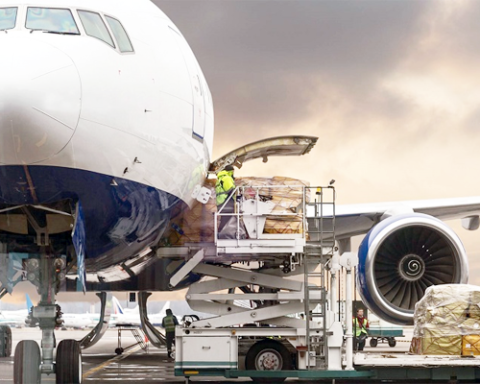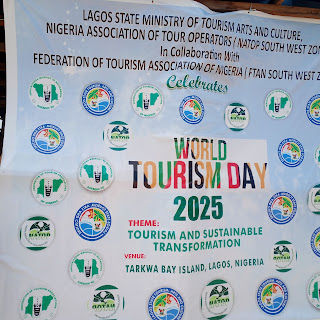A first-time visitor to Maida, located in Orile Mile 12, Lagos, particularly the coastal area known as Federal, which connects the community to the bustling and well-known commodity market at Mile 12, might easily believe they had arrived in a remote Niger Delta region. The atmosphere and geography of the area are strikingly similar to the riverine areas of the Delta, characterized by waterways, dense vegetation, and a reliance on traditional methods of transportation.
In this community, the only way to cross into or out of the area is by canoe. There are no bridges or modern transportation infrastructure linking Maida with its neighboring areas. Instead, local residents and visitors alike must rely on small wooden canoes to make their way across the water. For a modest fee of N50 per person, passengers are ushered into these canoes, which are meticulously arranged to ensure they do not exceed the capacity that the vessel can safely carry.

Safety is a primary concern, as overloading the canoe could lead to dangerous consequences, including the risk of capsizing in the water. To prevent accidents, a strict limit on the number of passengers per canoe is enforced. Only a set number of people is allowed to board each trip, and the boatmen pay close attention to balancing the weight and distribution of passengers within the canoe to ensure a safe journey across the water.
The experience of using these canoes, coupled with the unique landscape, gives first-time visitors the distinct impression that they are far removed from the hustle and bustle of a major city like Lagos. Instead, they find themselves in a setting that seems more in tune with the traditional, water-bound communities of the Niger Delta, where life is heavily dependent on the surrounding waterways for transportation, commerce and daily activities.
“O ti pe, e bo sile (it is complete, you must disembark),” a commanding voice would call out from the paddler, who typically occupies a seat at the rear of the canoe. His role is pivotal once the canoe has been filled to its designated capacity. After ensuring that all passengers are safely onboard, his next task is to start the small engine, which propels the canoe toward its destination, a point on the riverbank that lies only about two minutes away.
The journey across the water, though brief, is always carefully managed. The paddler, with years of experience navigating these narrow waterways, expertly guides the canoe, ensuring that it reaches the designated stopping point without incident. His skill is evident as he maneuvers the vessel, keeping it steady and avoiding any sudden movements that might alarm the passengers. As the canoe nears its destination, passengers begin preparing to disembark.
Once the canoe comes to a halt at the riverbank, a person stationed there plays a crucial role in maintaining stability. This individual is responsible for holding the canoe firmly in place, gripping its sides tightly to ensure that it does not wobble or shift. The slightest movement could cause the canoe to quiver, making it difficult for the passengers to step out safely. With this person’s assistance, the canoe remains securely in position, allowing the passengers to disembark without fear of falling into the water.

The entire process, from the paddler’s command to the careful securing of the canoe, demonstrates a finely-tuned system of cooperation between the boatmen and their helpers. Though the journey is short, every step is handled with care and precision to ensure the safety and comfort of those making the crossing.
“E ma je kii n subu ooo! (don’t let me fall!),” a middle-aged woman cried out as she desperately clutched the shoulder of a man stationed at the riverbank. His main task is to ensure that passengers disembarking from the canoe do not accidentally slip or fall into the murky, muddy river below. With a firm grip, he steadied her, reassuring her and others who might be similarly nervous about the crossing.
This scene is a common one, especially in the early morning hours, when a large crowd gathers from the surrounding community, forming a seemingly endless line of people waiting for their turn to cross the river. The atmosphere at this time is bustling, with residents hurrying to start their day, each patiently awaiting the moment when they can board one of the canoes to make the brief, but essential, journey across the water.
As the reporter observed, only two canoes equipped with small, propelled engines were in operation that day, ferrying passengers back and forth between the riverbanks. Meanwhile, two additional canoes, designed for manual paddling, were lying nearby, undergoing repairs. These traditional canoes are still used from time to time, though the powered ones are preferred for their speed and efficiency.
While waiting in line, passengers are required to follow certain rules to ensure safety and order. One key rule is that no canoe can be overcrowded. Each vessel has a strict capacity limit, and passengers are expected to adhere to this to prevent accidents. Additionally, everyone must respect the authority of the paddler, whose instructions are followed without question. The paddler’s word is final when it comes to boarding, disembarking, and maintaining order throughout the crossing.
Though the process may seem simple, it is managed with a great deal of care and discipline, with the safety of all passengers as the top priority. The passengers, some visibly anxious like the woman who had shouted earlier, rely on the coordination between the paddler and the helpers on the shore to ensure that they make their journey without incident.

Recounting their ordeals, many residents who spoke with this reporter expressed deep sadness and frustration over what they described as the government’s lack of attention and commitment to their area. One of the residents, Akintunde Alabi, shared his personal experience, explaining how life has been difficult and unbearable since he moved to the community.
“Every day is a struggle,” Alabi said, visibly distressed. “Moving in and out of this place has been nothing short of a nightmare. Just look at how we are lining up for only two canoes. This is what we go through every single day, morning and night. In the morning, it’s chaos as everyone tries to get to work on time, and in the evening, it’s the same as people return home, exhausted. This is our daily reality, and it’s been like this for as long as I can remember.”
His words capture the frustration of many others who, like him, have grown accustomed to the challenges of navigating their community with minimal infrastructure and government support. The routine of waiting in long lines for a limited number of canoes, especially during peak hours, has become a symbol of the hardship that defines life in the area.
When asked why he hadn’t relocated, he gave the reporter a somber look and responded: “Relocate to where? Do you have any idea how much I earn? Maybe you have something to give me to help with relocation?” He sighed before continuing: “I own my house here, and honestly, it’s one of the few places that’s affordable for tenants. Moving somewhere else just isn’t an option for someone like me.”
Among the waiting passengers were several students dressed in their various school uniforms. One of them, an SS2 student from Maryland Comprehensive School, who preferred to remain anonymous, shared her thoughts. “We’ve gotten used to this ever since the pedestrian bridge collapsed in 2022,” she explained. “Thankfully, we haven’t had any incidents of canoes capsizing in the middle of the river so far.”
“Since the pedestrian bridge collapsed two years ago, we have seen no improvement at all. Our only relief now comes from these canoes,” Bukola Olatunji shared, reflecting on the hardships she and her neighbors have endured. Bukola, who moved to the area two years ago, expressed frustration at the lack of meaningful progress in addressing the community’s needs. “Since I came here, I haven’t seen any positive impact on the community from the authorities or the people,” she explained.
She also hinted at suspicions about how the community might be handling the situation. “Maybe they’re enjoying the N50 they collect from passengers, sharing it among themselves,” she said, referring to the local Ilaje group. “At the meetings, instead of focusing on reconstructing the pedestrian bridge, they keep discussing security issues.” Her words highlighted the disconnect between what the community sees as its most pressing concern—the need for a new bridge—and the issues that are being prioritized by local leaders.

Although Bukola acknowledged that there are alternative routes to and from the area, she pointed out that the proximity of this location to the popular Mile 12 market makes it the preferred choice for most residents. Every day, people choose this route, despite the inconvenience of using canoes, because of how close it is to the market, which serves as an economic hub for the community.
In the course of the reporter’s investigation, it was revealed that the entire Maida area is highly prone to flooding due to the release of water from nearby dams. This vulnerability to flooding explains why many houses in the community are built on raised foundations, some elevated by at least three meters, to mitigate the effects of flooding before further construction begins. During the flood season, when the water levels rise, the only way to access these homes is by canoe, making water transport a daily necessity for residents.
Many of the residents were eager to speak to this reporter, sharing their frustrations and their collective desire for the same solution: the reconstruction of the pedestrian bridge. For them, this is the key to alleviating the daily struggles they face.
Responding to the concerns, Mr. Oluwole Adebisi, the Secretary of the Maidan Orile Mile 12 Community Development Area (CDA), explained that ever since the bridge collapsed in 2022, the community has had to rely on canoes as the only means of transporting people to and from the area, particularly at the riverbank known as ‘Federal’.
He recounted the numerous efforts the community has made to address the situation. “The community has tried every possible means to resolve these problems, but nothing has worked so far,” Adebisi said. “This area falls under the jurisdiction of the Ikosi-Isheri Local Council Development Area (LCDA). We’ve written letters to several key officials, including the Governor of Lagos State, Babajide Sanwoolu, our state representative, Hon. Femi Saheed, and the chairperson of the LCDA, Princess Samiat Abolanle, also known as the Mayoress. But despite all these efforts, we’re still waiting for any positive outcome.”
His words reflected the deep sense of frustration felt by many in the community, who are desperate for a permanent solution to the daily challenges they face. While the canoes have provided a temporary means of transportation, the residents remain hopeful that the reconstruction of the pedestrian bridge will finally give them the relief they seek. For now, however, their pleas have yet to be answered, and they continue to wait for action from the government and local authorities.
The only real solution to the challenges faced by the people in this area lies in the hands of the Lagos State government or the Ikosi-Isheri Local Council Development Area (LCDA). These authorities need to take the necessary action by addressing the community’s foremost concern: the reconstruction of the pedestrian bridge. For the residents, this bridge is not just a convenience but also an essential lifeline that would alleviate many of the daily struggles they endure, particularly in terms of transportation and access to basic services.

However, what remains unclear is whether this area has been officially approved for residential development by the Lagos State Ministry of Lands or other relevant authorities. This uncertainty arises because the area is prone to frequent flooding, which raises significant concerns about its long-term suitability for habitation. The flood-prone nature of the zone complicates the situation, as it might impact the government’s willingness to invest in infrastructure improvements like the much-needed bridge reconstruction.
This issue of land approval and flood risk presents a deeper and more complex challenge for the community, one that goes beyond the immediate need for the bridge. Whether or not the area was originally designated for residential use remains a question that requires further investigation—a story for another day. But for now, the residents continue to hope that their pressing concerns will be addressed, starting with the bridge that connects them to the rest of the city.


























